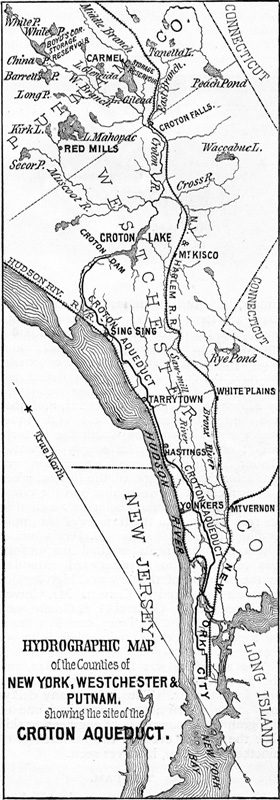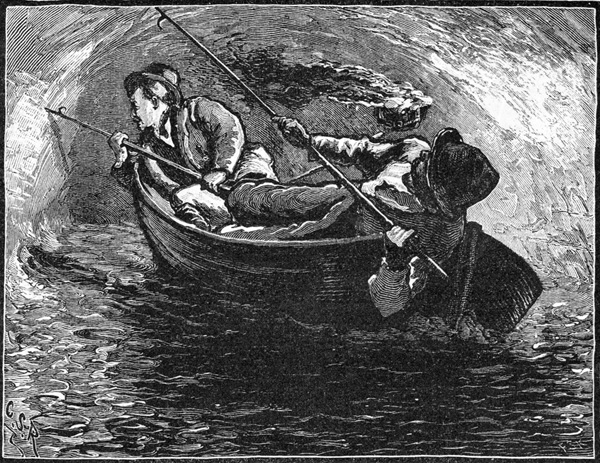The Old Croton Waterworks
Today, water for New York City. The University of Houston's College of Engineering presents this series about the machines that make our civilization run, and the people whose ingenuity created them.
Our daily water consumption in American averages around 170 gallons per person -- taking showers, watering lawns, running laundry machines and dishwashers, and serving the industries that serve us. We even drink some of that water, but not much.
Now, think about Manhattan Island -- a scant 33 square miles, home to nine million people. New Yorkers use a bit less than our national average. Still the Island needs over a billion gallons of water daily. Where to get it?

New York was still drawing its water from springs, wells, and cisterns after the American Revolution. (The water is too brackish in the surrounding rivers.) As Manhattan's population grew, it clearly needed outside water. Ever since the Revolution, they'd been eyeing a large lake district just north of Westchester county. The lakes, forty-some miles away, feed into the Croton River, and it discharges into the Hudson. Plenty of water there!
 So a committee of water commissioners went to work on competing plans in 1834. The most reasonable one was damming the Croton and running its water through an aqueduct along the East side of the Hudson, into Manhattan. Sounds easy enough.
So a committee of water commissioners went to work on competing plans in 1834. The most reasonable one was damming the Croton and running its water through an aqueduct along the East side of the Hudson, into Manhattan. Sounds easy enough.
But this was nearly two centuries ago -- a first-order engineering challenge to our struggling new nation. Still, we'd finished the Erie Canal and were now trying to build a railroad across the Alleghenies. We were nothing if not ambitious builders. Construction began in 1837 and was finished in five years.
Only 34 years later, a magazine article pointed out that it now needed to be expanded. It said that New Yorkers used water recklessly. Citizens of Liverpool were then using thirty gallons a day while New Yorkers used a hundred. (By the way, soon after New Yorkers abandoned wells, the water table rose and their basements flooded.)
The Old Croton Aqueduct was huge. Its seven-foot-wide tunnels let inspectors carry torches in small boats to check its integrity from within. Great bridges carried water over streams. And it was all driven by gravity -- no pumps. The Aqueduct fed several Manhattan reservoirs. One, in the center of what's now Central Park, has since been filled in. Now it's the Park's Great Lawn. (See picture above)
The Old Croton Aqueduct was replaced with a new one in 1890. It had three times the capacity. Since then, a Catskill/Delaware watershed has been tapped for water. The Croton Watershed still serves New York but it's now by far the smaller of the two sources.
What began in the 1830s has become one of the world's largest, most complex water supply systems. The Old Aqueduct is now a trail for bikers and hikers -- a string of ventilation shafts, gate houses, bridges, and more. It makes a very satisfying celebration of early American commitment and ability. It reminds us that, as we set out to build a new nation, we knew our new form of government would ultimately be held together by brick, mortar, and iron.
I'm John Lienhard at the University of Houston, where we're interested in the way inventive minds work.
W. H. Rideing, Croton Water. Scribner's Monthly, Vol. XIV, No. 2, 1877, pp. 161-176. All images are from this source.
See Wikipedia entries for Croton Aqueduct and New York City water supply system. See also the Ecolibrary.com map of the NY City watershed.


